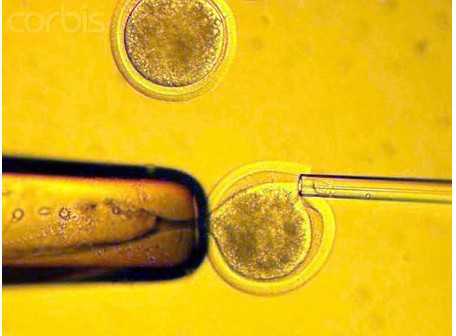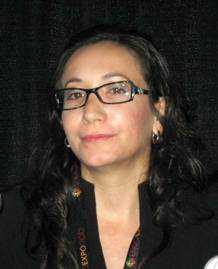Diabetes:胚胎干细胞移植治疗糖尿病动物实验获成功
2012-07-11 马晓澄 新华网
近日,加拿大和美国科学家在一项最新研究中,通过向罹患糖尿病的实验鼠移植人类胚胎干细胞,成功使实验鼠恢复了胰岛素分泌功能。这项研究由加拿大不列颠哥伦比亚大学和美国扬森研发公司共同完成,并于近日发表在《糖尿病》(Diabetes)期刊上。科学家希望这一新发现能为寻求治疗糖尿病的新疗法铺平道路。 在研究中,患有糖尿病的实验鼠在接受干细胞移植后,研究人员停止向它们注射胰岛素。三四个月后,实验鼠即使被喂食

近日,加拿大和美国科学家在一项最新研究中,通过向罹患糖尿病的实验鼠移植人类胚胎干细胞,成功使实验鼠恢复了胰岛素分泌功能。这项研究由加拿大不列颠哥伦比亚大学和美国扬森研发公司共同完成,并于近日发表在《糖尿病》(Diabetes)期刊上。科学家希望这一新发现能为寻求治疗糖尿病的新疗法铺平道路。
在研究中,患有糖尿病的实验鼠在接受干细胞移植后,研究人员停止向它们注射胰岛素。三四个月后,实验鼠即使被喂食大量的糖,也依然能够保持健康的血糖水平。
论文作者之一、不列颠哥伦比亚大学教授蒂莫西·基弗说,他们对新发现感到振奋,但这种方法在进行人体临床试验之前,还需要更多研究。
基弗说,研究所用的患病实验鼠缺乏正常运行的免疫系统,而正常的免疫系统可能会对移植的干细胞产生排异反应。他说,现在研究团队要做的就是找到一种保护干细胞免受免疫系统攻击的合理方法,从而使移植最终可以在不需要免疫抑制的情况下进行。
但是,这仍然是动物实验阶段,离临床应用还有相当长的距离
拓展阅读:
Diabetes Care:自体造血干细胞移植为1型糖尿病带来希望

doi:10.2337/db11-1711
PMC:
PMID:
Maturation of Human Embryonic Stem Cell–Derived Pancreatic Progenitors into Functional Islets Capable of Treating Pre-existing Diabetes in Mice
Alireza Rezania1, Jennifer E. Bruin2, Michael J. Riedel2, Majid Mojibian2, Ali Asadi2, Jean Xu1, Rebecca Gauvin1, Kavitha Narayan1, Francis Karanu1, John J. O’Neil1, Ziliang Ao3, Garth L. Warnock3 and Timothy J. Kieffer
Diabetes is a chronic debilitating disease that results from insufficient production of insulin from pancreatic β-cells. Islet cell replacement can effectively treat diabetes but is currently severely limited by the reliance upon cadaveric donor tissue. We have developed a protocol to efficiently differentiate commercially available human embryonic stem cells (hESCs) in vitro into a highly enriched PDX1+ pancreatic progenitor cell population that further develops in vivo to mature pancreatic endocrine cells. Immature pancreatic precursor cells were transplanted into immunodeficient mice with streptozotocin-induced diabetes, and glycemia was initially controlled with exogenous insulin. As graft-derived insulin levels increased over time, diabetic mice were weaned from exogenous insulin and human C-peptide secretion was eventually regulated by meal and glucose challenges. Similar differentiation of pancreatic precursor cells was observed after transplant in immunodeficient rats. Throughout the in vivo maturation period hESC-derived endocrine cells exhibited gene and protein expression profiles that were remarkably similar to the developing human fetal pancreas. Our findings support the feasibility of using differentiated hESCs as an alternative to cadaveric islets for treating patients with diabetes.
本网站所有内容来源注明为“梅斯医学”或“MedSci原创”的文字、图片和音视频资料,版权均属于梅斯医学所有。非经授权,任何媒体、网站或个人不得转载,授权转载时须注明来源为“梅斯医学”。其它来源的文章系转载文章,或“梅斯号”自媒体发布的文章,仅系出于传递更多信息之目的,本站仅负责审核内容合规,其内容不代表本站立场,本站不负责内容的准确性和版权。如果存在侵权、或不希望被转载的媒体或个人可与我们联系,我们将立即进行删除处理。
在此留言













#细胞移植#
70
#DIA#
76
#BET#
63
#Diabetes#
63
#胚胎#
66
#胚胎干细胞#
51
#干细胞移植治疗#
81